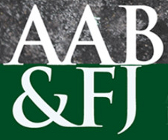Abstract
This paper explores the nature and extent of financial exclusion of Muslim community in Australia. Adopting a survey questionnaire method primary data has been used, and Queensland is the selected state for this exploratory case study. While nearly 3 billion people in the world face difficulties in accessing formal financial services and products, in Australian alone, approximately 3.1 million of the adult population are identified as being financially excluded. There is still a lack of information about financial exclusion according to ethnicity or religious group in Australia. The Muslims communities are financial excluded mainly due to their faith and religious beliefs, because Islam prohibits Riba (interest) which is widely practiced in conventional banking and finance operations. The level of awareness about the Islamic finance products and services in Australia is still limited. Also the lack of Islamic financial products and services is a contributory factor of financial exclusion. The introduction and wide spread offer of Shariah-compliant financial products and services by Islamic and conventional financial institutions can increase nationwide financial inclusion.
Keywords: Islamic Finance, Financial inclusion and Australia
How to Cite:
Sain, M. R., Rahman, M. M. & Khanam, R., (2019) “Financial Exclusion and the Role of Islamic Finance in Australia: A Case Study in Queensland”, Australasian Accounting, Business and Finance Journal 12(4), 23-42. doi: https://doi.org/10.14453/aabfj.v12i4.3
Downloads:
Download PDF
468 Views
1679 Downloads

